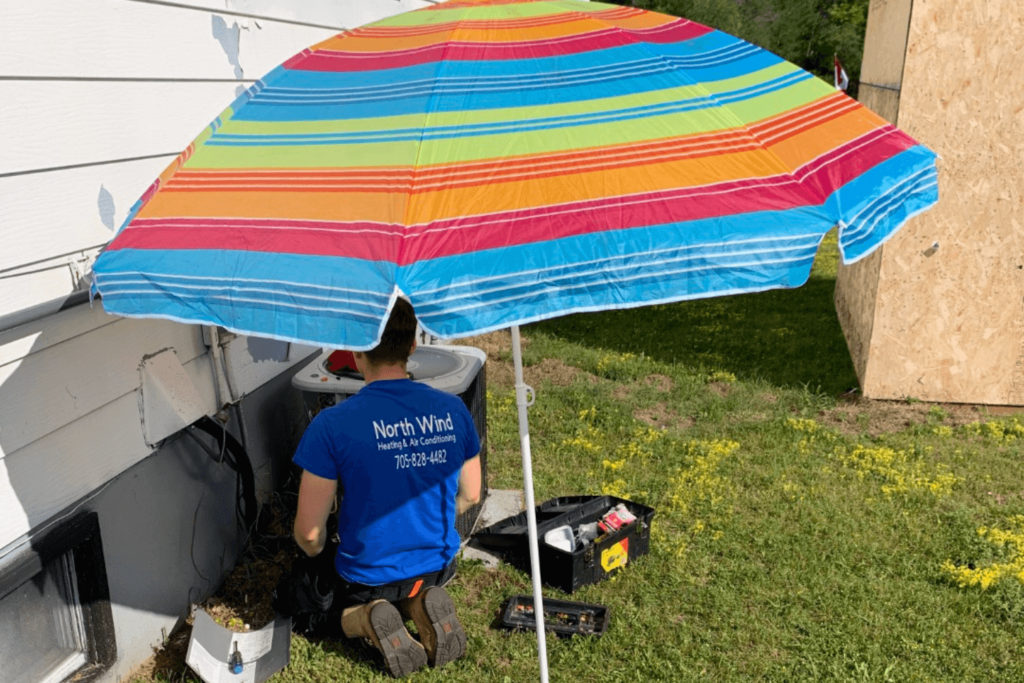Table Of Contents:
Understanding Energy Efficiency Ratings
ENERGY STAR Rating
Seasonal Energy Efficiency Ratio (SEER)
Energy Efficiency Ratio (EER)
Practical Ways to Improve Your Home and HVAC System Efficiency
1. Optimize Thermostat Settings
2. Regular HVAC System Maintenance
3. Improve Home Insulation and Sealing
4. Upgrade to Energy-Efficient Equipment
5. Utilize Fans to Improve Air Circulation
6. Adopt Efficient Habits and Practices
7. Explore Renewable Energy Sources
8. Professional HVAC Guidance and Services
Finding ways to save energy at home can significantly reduce your monthly expenses. Upgrading AC appliances and furnaces with Energy Star Rating, high SEER and EER ratings is one of the main ways to reduce your energy bills. However, there are a lot of other practical ways to improve the energy efficiency of your home. Ensuring proper insulation and sealing is an excellent way to maintain indoor temperatures year-round. Adopting sustainable habits, utilizing renewable energy sources, upgrading to a smart thermostat and scheduling regular maintenance are other effective strategies to ease the load on your HVAC system and reduce your energy costs.
Understanding Energy Efficiency Ratings: ENERGY STAR, SEER, and EER
Ensuring your HVAC system and home appliances are energy-efficient can significantly reduce energy consumption, save money on utility bills, and contribute to a more sustainable home. Key energy efficiency ratings, such as ENERGY STAR, SEER, and EER, help homeowners make informed decisions about their purchases. Here’s a detailed guide to understanding these ratings and what to look for when choosing energy-efficient products.
ENERGY STAR Rating
The ENERGY STAR rating is a certification for appliances and systems that meet stringent energy efficiency guidelines set by the U.S. Environmental Protection Agency (EPA) and the Department of Energy. Products with this label use less energy, saving money on utility bills and reducing greenhouse gas emissions, which helps protect the environment.
What to Look For:
- Look for the blue ENERGY STAR logo on HVAC systems, refrigerators, washing machines, and other appliances.
- This label signifies that the product meets or exceeds energy efficiency guidelines.
Seasonal Energy Efficiency Ratio (SEER) Rating
The SEER rating measures the cooling efficiency of air conditioners and heat pumps. It is calculated by dividing the cooling output during a typical cooling season by the total electric energy input during the same period. Higher SEER ratings indicate greater energy efficiency, which translates to lower operational costs and reduced energy consumption.
What to Look For:
- Find the SEER rating displayed on the unit’s EnergyGuide label.
- The minimum SEER rating for new systems is typically around 14, but the most efficient units can have SEER ratings of 20 or more.
- Choose systems with higher SEER ratings for better efficiency and lower operational costs.
Energy Efficiency Ratio (EER) Rating
The EER rating measures the efficiency of cooling devices at a specific temperature (usually 35 °C). It is calculated by dividing the cooling capacity (in BTUs) by the power input (in watts). Higher EER ratings indicate more efficient systems, making EER particularly useful for evaluating efficiency during peak cooling times.
What to Look For:
- Look for the EER rating on the unit’s EnergyGuide label.
- The minimum EER ratings you should be looking out for is 8.5 and above.
- Higher EER ratings are beneficial for environments with consistently high temperatures.
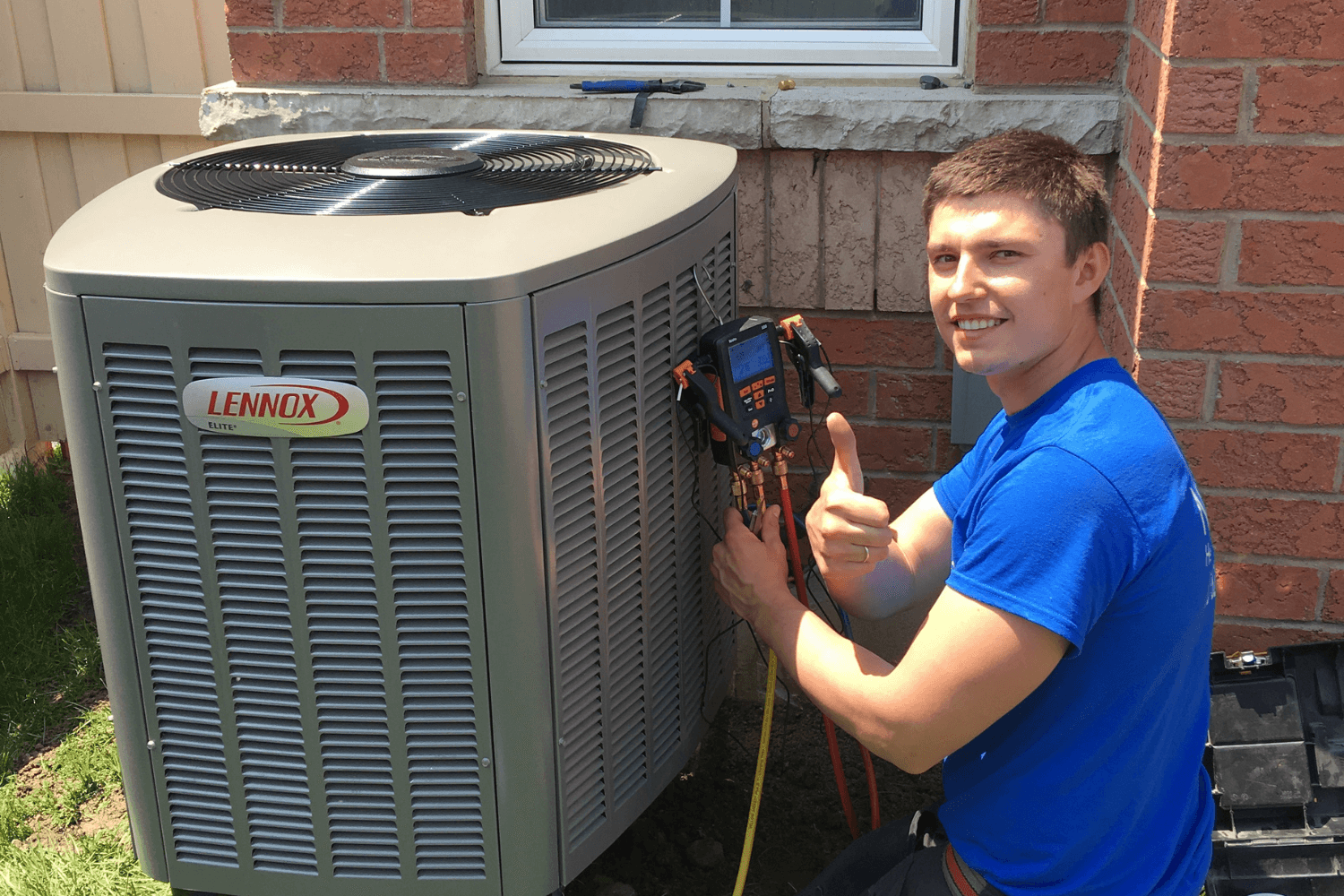
Practical Ways to Improve Your Home and HVAC System Efficiency
Improving your home’s energy efficiency can lead to significant savings on your monthly energy bills. By focusing on key areas, you can enhance the performance of your HVAC system and reduce overall energy consumption. Here are practical tips to boost your home’s efficiency, along with detailed steps on how to implement them.
1. Optimize Thermostat Settings
Programmable and smart thermostats can significantly reduce energy use by adjusting temperatures according to your schedule. By optimizing HVAC operation, these devices prevent unnecessary heating or cooling when you’re not home, resulting in lower energy bills.
What to Do:
Install a Programmable or Smart Thermostat:
- Upgrading to smart thermostats offer additional features like remote control via smartphone and learning algorithms to adjust settings based on your habits.
- Follow the manufacturer’s instructions for installation or call North Wind HVAC for setup.
Adjust Temperature Settings:
- In the summer, set your thermostat a few degrees higher when you’re not home or while sleeping. In winter, set it a few degrees lower.
- Experiment with different settings to find the balance between comfort and energy savings.
2. Regular HVAC System Maintenance
Routine maintenance ensures your HVAC system operates at peak efficiency, preventing unexpected breakdowns and extending the life of your equipment.
What to Do:
Schedule Bi-Annual Check-Ups:
- Book a professional inspection with North Wind HVAC in spring and fall.
- Technicians will check for potential issues and ensure your system is ready for the upcoming season.
Replace Filters:
- Replace or clean air filters every 1-3 months, or according to the manufacturer’s recommendations.
- Use high-quality filters to maintain proper airflow and prevent dust and debris from clogging the system.
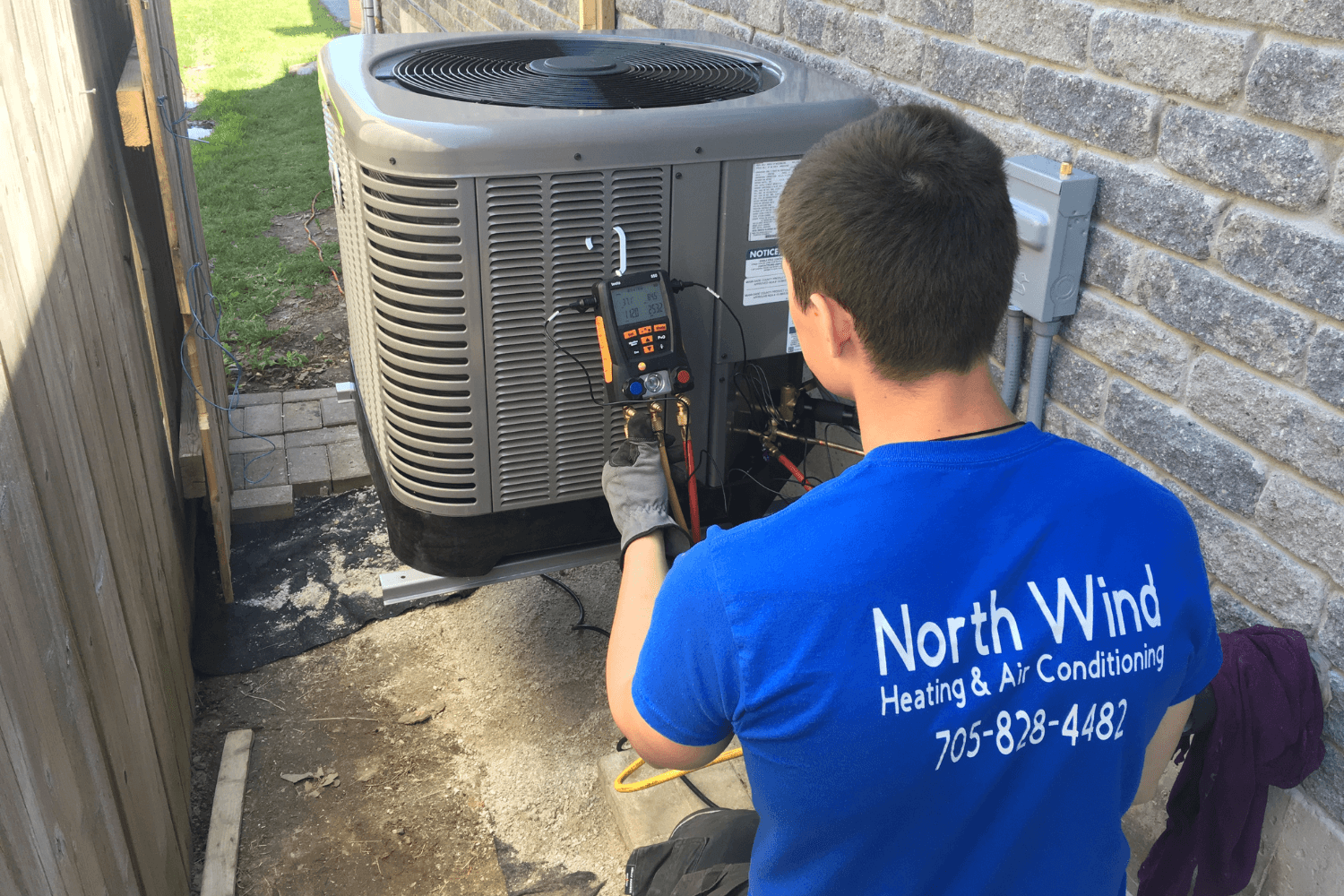
3. Improve Home Insulation and Sealing
Proper insulation and sealing prevent heat loss in winter and keep cool air in during summer. By reducing the workload on your HVAC system, you lower energy consumption and extending the life of your HVAC units.
What to Do:
Add Insulation:
- Upgrade the insulation in your attic, walls, and floors to reduce heat transfer.
- Use materials like fibreglass batts, foam boards, or spray foam, and follow local building codes.
Seal Drafts and Leaks:
- Inspect windows, doors, and other openings for gaps and drafts.
- Use weatherstripping, caulking, or expanding foam to seal these gaps and prevent air leaks.
Duct Sealing:
- Check for leaks in your ductwork and seal them with aluminum tape or mastic sealant.
- Properly sealed ducts improve airflow and system efficiency.
4. Upgrade to Energy-Efficient Equipment
Energy-efficient HVAC systems consume less power while delivering the same or better performance compared to older models. High SEER and EER ratings indicate superior efficiency, leading to lower utility bills.
Shop energy-efficient HVAC appliances online with North Wind HVAC!
What to Do:
Choose ENERGY STAR Certified Equipment:
- Look for HVAC systems with the ENERGY STAR label, which signifies high energy efficiency.
- Check SEER and EER ratings, the higher the rating the more energy-efficient the unit will be.
Ensure Proper Sizing and Installation:
- Work with professionals to select the right-sized equipment for your home.
- Proper installation ensures optimal performance and avoids energy waste.
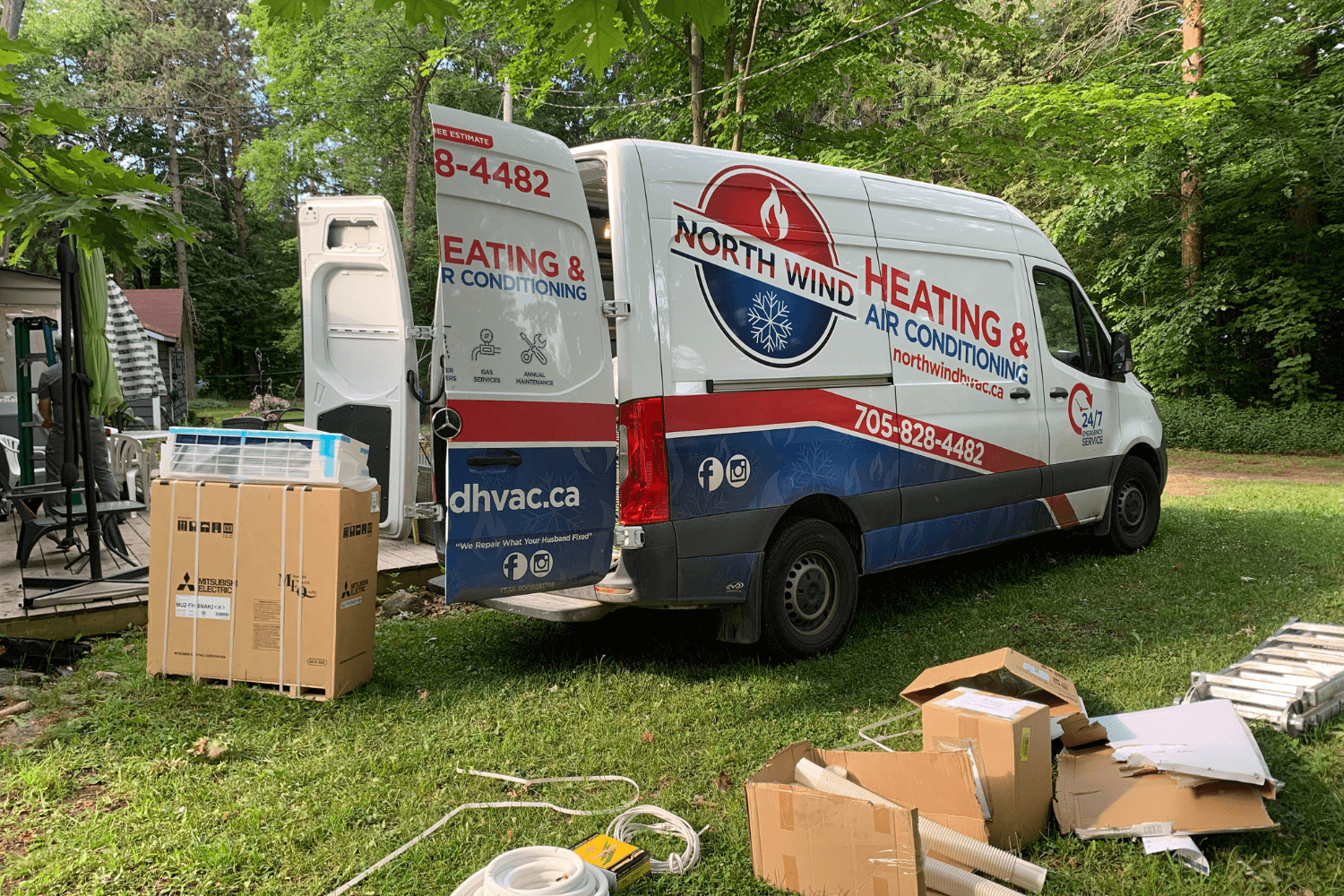
5. Utilize Fans to Improve Air Circulation
Fans help distribute air more evenly throughout your home, which can reduce the demand on your HVAC system. This improves comfort and can lead to energy savings by reducing the need for excessive heating or cooling.
What to Do:
- Set ceiling fans to rotate counterclockwise in summer to create a cooling breeze.
- In winter, reverse the direction to circulate warm air from the ceiling.
- Turn off fans when rooms are unoccupied to avoid wasting energy.
6. Adopt Efficient Habits and Practices
Simple changes in daily habits and appliance usage can lead to significant energy savings. Efficient water heating and appliance usage reduce overall energy consumption.
What to Do:
Optimize Water Heater Settings:
- Set your water heater temperature to 120°F to balance comfort and energy use.
- Insulate hot water pipes to reduce heat loss.
Upgrade Appliances:
- Replace old appliances with ENERGY STAR certified models to ensure energy efficiency.
- Use cold water for laundry and air-dry clothes to reduce energy use.
Monitor Energy Usage:
- Use smart thermostats and home energy monitors to track and optimize your energy consumption.
- Review energy usage data to identify areas where you can make further improvements.
7. Explore Renewable Energy Sources
Renewable energy sources like solar and geothermal can significantly reduce your carbon footprint and lower energy costs. They provide sustainable alternatives to traditional energy sources.
What to Do:
Consider Solar Power:
- Explore options for installing solar panels to generate clean, renewable energy.
- Research financial incentives and rebates to help offset installation costs.
Explore Geothermal Heating and Cooling:
- Consult with North Wind HVAC to learn about geothermal systems, which use the Earth’s stable temperature for efficient heating and cooling.
- Evaluate the feasibility of geothermal systems for your home.
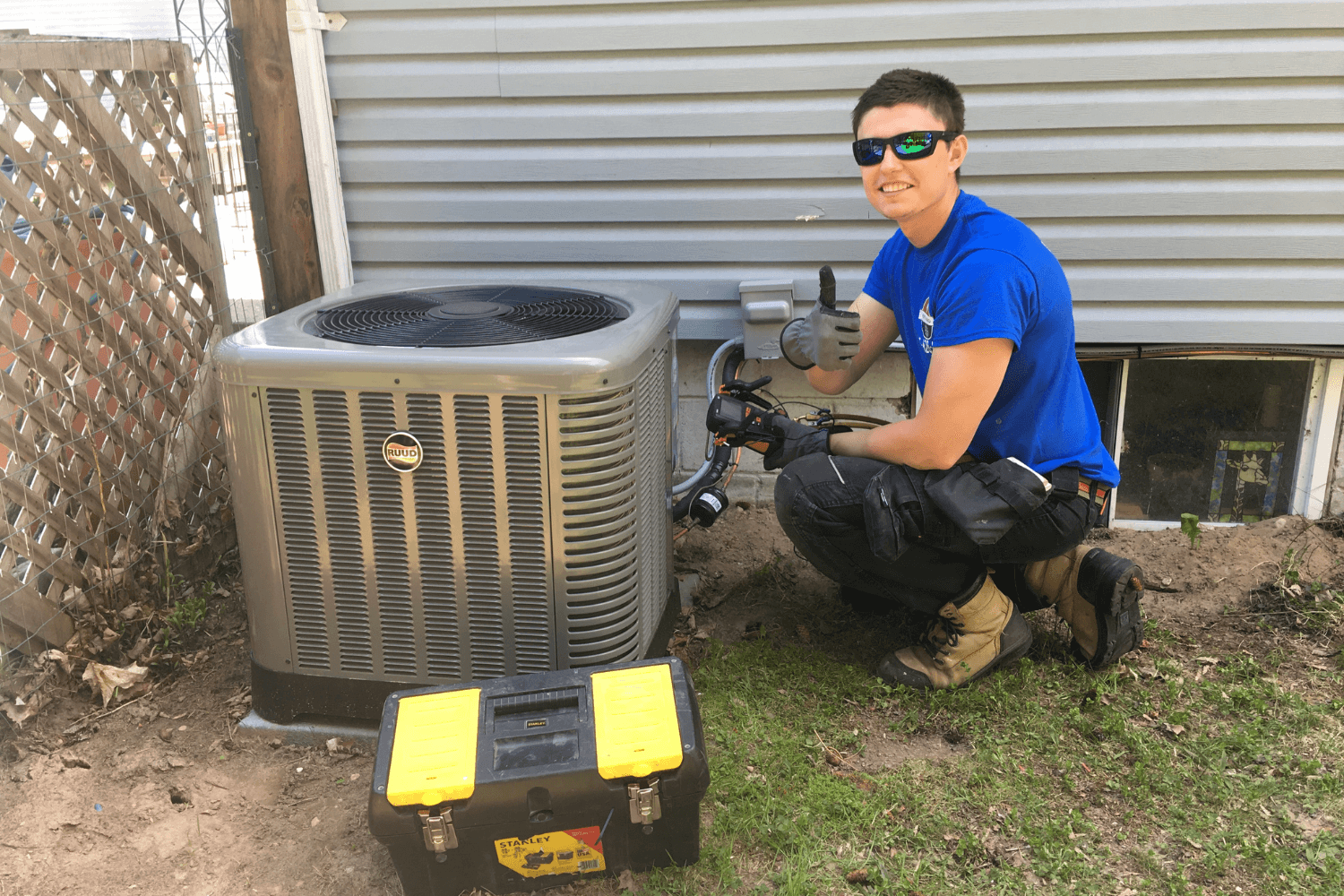
8. Professional HVAC Guidance and Services
Professional assessments and regular maintenance ensure that your HVAC system operates at peak efficiency and addresses any issues that may affect performance.
What to Do:
Schedule a Home Energy Audit:
- Arrange for a comprehensive energy audit with North Wind HVAC to identify opportunities for improvement.
- Implement recommended upgrades and improvements based on the audit findings.
Regular Maintenance and Emergency Services:
- Rely on North Wind HVAC for routine maintenance, emergency repairs, and expert advice.
- Regular maintenance helps prevent issues and ensures your system runs efficiently.
By following these detailed tips and working with North Wind HVAC, you can enhance your home’s energy efficiency, reduce costs, and enjoy a more comfortable living environment. For personalized advice and professional services, contact us today!
